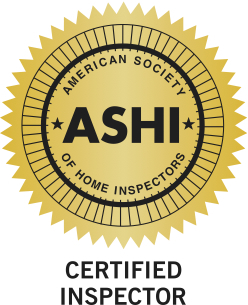Navigation |
RADONWhat Every Homeowner Needs to Know1. Radon is an invisible, odorless, radioactive gas that occurs naturally by the natural breakdown (decay) of uranium in rock, soil and water. 2. Some areas have more radon problems than others. Up to 56% of homes in the Northern Virginia area have been found to have HIGH levels of radon. See a large Fairfax County Radon Potential Map by clicking HERE. 3. Radon is a health hazard and exposure to radon in the home is responsible for an estimated 21,000 lung cancer deaths each year. 4. All radon problems are correctable with a simple solution. In most homes, radon levels can be reduced for around $900-$1200. Read "A Citizen's Guide to Radon". 5. So, you can't see, smell or taste radon. The only way know if your home has has high levels of radon is to test for it! Age of home, foundation type (basement, crawlspace, or slab), walk-out basement or not, or neighborhood trends are not useful indicators of radon levels. Click here For more information on Indoor Radon Program from the Virginia Department of Health EPAs BASIC RADON FACTS (download PDF)
Nearly one out of 15 homes in the U.S. is estimated to have elevated radon levels. Up to 56% of Northern Virginia homels have been found with elevated levels. The only way to know if your home has elevated levels is to test Testing is easy and inexpensive. EPAs CITIZEN'S GUIDE TO RADON (download PDF)
For Northern Virginia real estate transactions, a Short-Term (minimum of 48 hours) radon test is generally called for. Closed-House conditions must be met throughout this short-term test, as well as for the 12 hours before the start of the test. This means all windows closed; exterior doors closed, except for normal entry and exit; and house air exhaust routes closed (kitchen hood fan off, fireplace damper closed, bathroom fan off). Closed-house conditions do not prevent living in the house or showing the house. INTERPRETING TEST RESULTS Radon is measured in pico Curies of radon per liter of air, expressed as pCi/L. The average indoor radon level in the U.S. is estimated to be about 1.3 pCi/L. The air outdoors normally has about 0.4 pCi/L of radon. The action level, determined by the US EPA, is 4.0 pCi/L. Any level at 4 or higher should be reduced, and you should consider reducing levels between 2 and 4. The actual cancer risk from radon exposure varies with the radon concentration, the number of hours you spend exposed to that concentration each day, and how many years of your life you are exposed. The important thing to keep in mind is that 4.0 pCi/L is not a "magic" safe level. The 4.0 action level was chosen because at that time, levels lower than that could not be reliably reduced. The mitigation methods available at that time were only reliable at levels above 4. These decisions were made during the early days of radon research (mid 1980's), and a great deal has been learned about the science since then. Good radon reduction systems now routinely achieve radon levels in homes below 1 pCi/L, with less noise and energy cost than the earlier systems. Keep in mind that there is a substantial annual cycle in radon levels. Testing done in the summer will generally result in lower readings than if done during the winter months. Keep in mind that your home may not be your only exposure point for radon. Has your workplace or school been tested? One might think that removing a colorless, odorless, chemically inert gas from the air of a building would be very difficult, but the principles are surprisingly simple. To remove radon, one must first understand how it gets in. Few of us are accustomed to thinking of the air in a home as a finite quantity. Each cubic foot of air that is forced up a chimney by heat, or blown out of a duct by a dryer, must be replaced. If the house is even loosely closed, the air for replacement can't leak in easily, and a slight vacuum develops in the house. In cold weather, the natural buoyancy of warm air tends to make the vacuum in the basement stronger, and raise the pressure in the upper parts of the house. This is called 'stack effect'. The net result is that the house is sitting on the soil like a big vacuum cleaner, sucking in soil gas. Soil gas consists of ordinary air and water vapor, but if there is a small amount of uranium in the soil, then radon will be part of this inflow. Can't we just seal out the soil gas? Well, we can try, but it's nearly impossible. Radon, like water vapor, is quite capable of passing through the pores of solid concrete. It will come through cracks and holes if they are present, but it doesn't need any visible opening at all. Trying to seal out radon from inside a basement is like trying to caulk a boat from inside the bilge. It just doesn't work. Good radon mitigation involves reversing the pressure gradient that drives radon entry. In other words, we must create a stronger low pressure zone in the soil below the basement floor slab than the house is creating above the slab. This is done by installing a small electric fan, and ducting the fan's input side to the soil under the floor. The fan's exhaust side is then ducted to the atmosphere. Important to note: A well-designed mitigation system does not exhaust house air, and the ventilation rate in the living area is not substantially affected! The air coming out of the mitigation pipe is coming from the soil under the basement floor. If one tried to reduce radon levels by actually ventilating the basement, the increase in heating and cooling cost would be enormous! This is why 'just opening the windows' is not a viable mitigation option. Of course, in order to maintain the strength of the sub-slab vacuum field, the mitigator will seal cracks, holes, etc. in the foundation floor. Additionally, a byproduct of properly installed radon mitigation is that it also serves as an excellent basement de-humidifier! Radon as a Consideration in Virginia Real Estate Transactions ~ click here |

